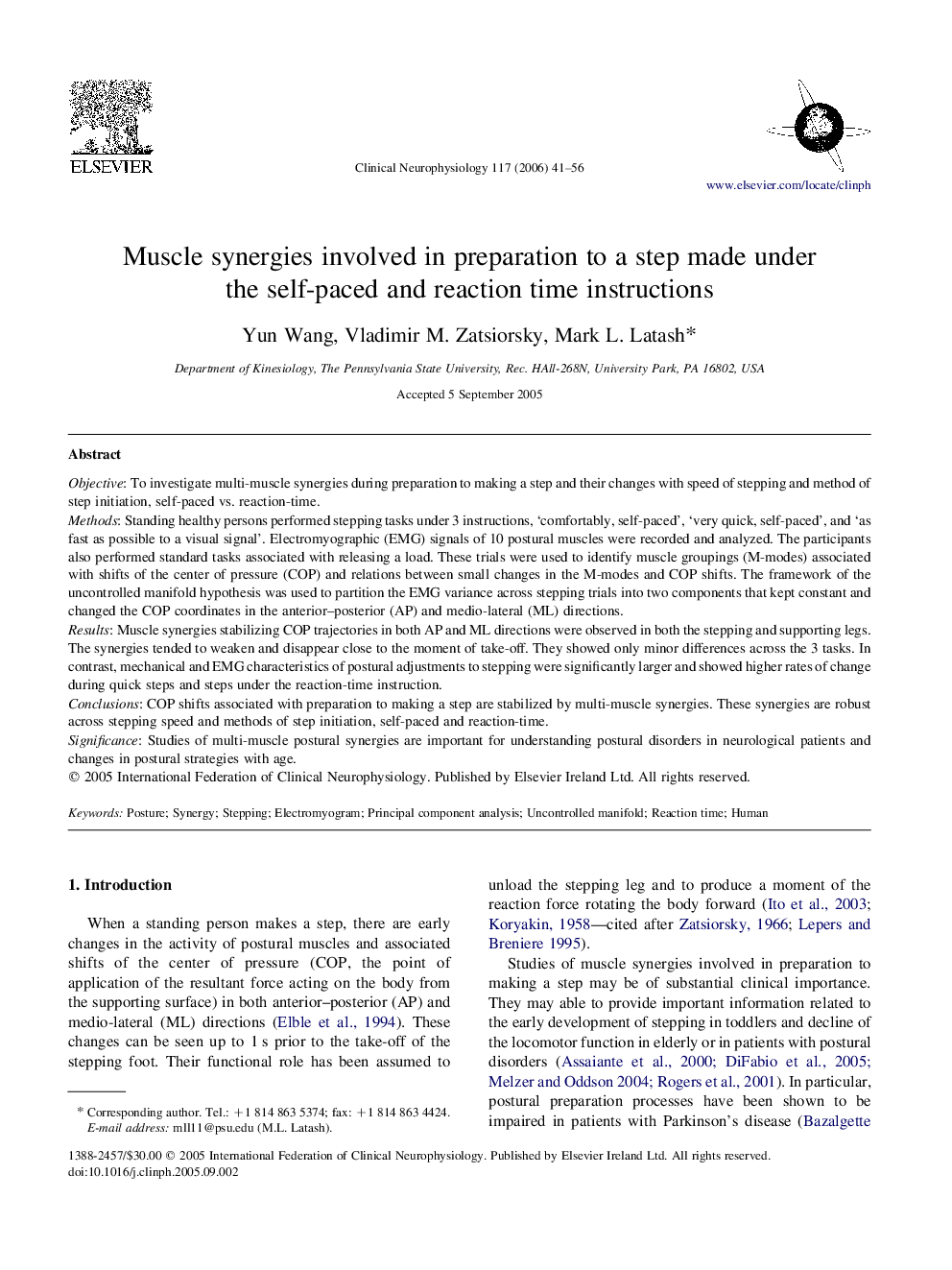| Article ID | Journal | Published Year | Pages | File Type |
|---|---|---|---|---|
| 3048066 | Clinical Neurophysiology | 2006 | 16 Pages |
ObjectiveTo investigate multi-muscle synergies during preparation to making a step and their changes with speed of stepping and method of step initiation, self-paced vs. reaction-time.MethodsStanding healthy persons performed stepping tasks under 3 instructions, ‘comfortably, self-paced’, ‘very quick, self-paced’, and ‘as fast as possible to a visual signal’. Electromyographic (EMG) signals of 10 postural muscles were recorded and analyzed. The participants also performed standard tasks associated with releasing a load. These trials were used to identify muscle groupings (M-modes) associated with shifts of the center of pressure (COP) and relations between small changes in the M-modes and COP shifts. The framework of the uncontrolled manifold hypothesis was used to partition the EMG variance across stepping trials into two components that kept constant and changed the COP coordinates in the anterior–posterior (AP) and medio-lateral (ML) directions.ResultsMuscle synergies stabilizing COP trajectories in both AP and ML directions were observed in both the stepping and supporting legs. The synergies tended to weaken and disappear close to the moment of take-off. They showed only minor differences across the 3 tasks. In contrast, mechanical and EMG characteristics of postural adjustments to stepping were significantly larger and showed higher rates of change during quick steps and steps under the reaction-time instruction.ConclusionsCOP shifts associated with preparation to making a step are stabilized by multi-muscle synergies. These synergies are robust across stepping speed and methods of step initiation, self-paced and reaction-time.SignificanceStudies of multi-muscle postural synergies are important for understanding postural disorders in neurological patients and changes in postural strategies with age.
